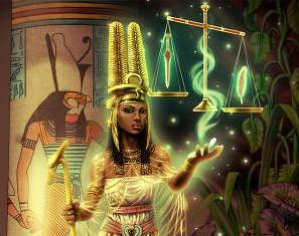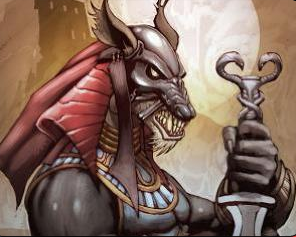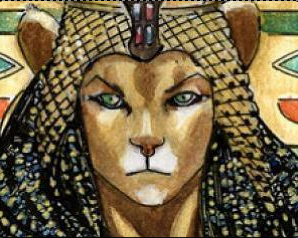If there is anything that is a constant in my custom set drafts, it’s that people always complain that their decks are bad and incoherent (even if it’s far from true). Let’s hope that this guide can alleviate that!
Full Card List
Mechanics

Wanderlust (Whenever this creature attacks, look at the top card of your library. You may put it on the bottom of your library. If it’s a land card, you may put it onto the battlefield tapped.)
Wanderlust is a mechanic that encourages you to attack, even in slow ramp or control decks. Wanderlust creatures generally have a smaller body and need help to be able to attack. Chump attacking to get a wanderlust trigger is almost never a good strategy. Wanderlust comboes with cards that manipulate the top of your deck.
Vessel (Whenever this creature attacks, do something to other attacking creatures.)
The Vessel ability word appears on Ships, which are colored artifact creatures. Vessel is another mechanic that encourages you to attack, although, unlike Wanderlust, only aggressive decks will be interested to use it most of the time.
Riposte {cost} (You may cast this card for its riposte cost if a creature is attacking you.)
Riposte is a mechanic that encourages you to defend and balances out Wanderlust and Vessel. The mana discount allows you to keep up combat tricks more easily on your opponent’s turn.
Growth {cost} ({Cost}: Put a +1/+1 counter on this creature. This costs 1 more to activate for each +1/+1 counter on it. Grow only as a sorcery.)
Growth is a generic mana sink mechanic appearing on sea monsters. Many of the sea monsters with Growth have an additional mechanic that triggers whenever they attack and have the greatest power among creatures on the battlefield. Growth helps you achieve that condition, but also pump spells, or Equipments can help out.
Tip: You can respond to an opponent’s attack trigger with a pump spell to counter it, even using riposte. The power check is performed only upon resolution of the trigger, so you can attack first, then respond with a pump spell to meet the condition.
Quest hub (When this enchantment enters the battlefield, draw a card. You may complete each quest once. When you’ve completed both, sacrifice this.)
Quest hubs are enchantments with “quest abilities.” These are like normal activated abilities, but can be activated only once. Each quest hub costs two mana, draws a card when it enters the battlefield, and has two quest abilities with varying activation costs. Quest hubs act as mana sinks in the lategame that have a relatively low opportunity cost – you can cycle them early and ignore them until later in the game. Most quest hubs are very strong, but there’s a limit to how many you should play because you’ll never find the time to complete all quests if you play too many.
Tip: To represent the state of a quest hub, put a dice on it. On 1, the dice indicates that the first ability has been activated. On 2, the second.
Gold tokens (Put a colorless artifact token named Gold onto the battlefield. It has: “Sacrifice this artifact: Add one mana of any color to your mana pool.”)
Some cards produce gold tokens, similar to those in Theros block. Gold tokens can be used for ramping, to keep up combat tricks, and for mana fixing. There are also cards that use artifacts as a resource.
Tribal
Overworld has a significant tribal component. On a scale from Innistrad to Lorwyn, Overworld is somewhere in the middle.
Archetypes
White-Blue Adventurers

While all colors have access to quest hubs, blue and white are the only colors that have cards that specifically synergize with them – in the form of the two uncommons Elvish Adventurers and Errant Adventurer. The low density of those pay-off cards means that this archetype can’t be forced. However, Errant Adventurer is a very powerful card in a deck with many quest hubs and allows you to pick them much higher.
The adventurer deck can play the control game and outvalue the opponent with the plethora of quest hubs, or use the mana advantage generated by Errant Adventurer to play the tempo game like many white-blue decks in Limited. As both adventurers have a relevant creature type, Elf respectively Pirate, they blend well with tribal archetypes.
Blue-Black Pirates

The blue-black aggro deck relies on otherwise mediocre cards such as Thirst for Treasure, that suddenly become very strong when combined with Captain’s Parrots and similar creatures. As Pirates are secondary in blue, the Pirate synergies can be implemented, but it isn’t essential. Blue-black can also be built more controlling, but many commons in these colors support a tempo strategy better.
Red-Black or Grixis Pirates

Red-black Pirates are a typical aggro deck with a few tribal synergies. Jacon’s Recruiters is a very high pick in this deck. Due to the gold tokens that are available in those colors, it is not unreasonable to play straight three-color. The third color will most likely be blue, where you can pick up additional Pirates. Southsea Sky Pirates is generally too cost-inefficient to make the cut, but with enough Recruiters, it becomes quite good.
Green-X Sea Monsters

A green-based ramp deck exists in the form of sea monster tribal (Kraken, Leviathan, Octopuses, and Serpents). As sea monsters appear in all colors save white, the second color is free to choose. Each of those colors has one common that supports the sea monster tribal. In addition, there is Culinary Ogre at uncommon, making red-green a slight favorite as the choice of color combination. However, this archetype can make use of the powerful fixing in the format and easily go three-color. Iyori Deepspeaker is a very crucial common for this deck.
Green-White Elves

In the green-white pair, you can draft the elves archetype. Like a typical elves deck, you swarm the board and attack the opponent with an overwhelming force. A clear signal that elves are open is Elvish Reveler, as it is a great, efficient pay-off card for the deck. Elves can be combined with sea monsters to round out the deck with some heavy hitters.
Green-Blue Turtles

Turtles are centered in green and blue. The deck is based around the powerful pay-off cards Limestone Tortoise, Torta’s Warleader, and Keeper of Chronicles. Most turtles have a lot of toughness, and block very well, but to win the game, you need some additional finishers. As a control-ramp deck, it can put the most expensive sea monsters, costing up to eight mana, to use.
Red-White Conquistadors

While Ships appear in all colors save green, Ship synergy only appears in white (with the exception of one uncommon in red). Ships are at their best in a red-white aggressive token deck with a lot of pump effects. Iyori Port is a premium common for that deck. If you see a late Lecadian Conquistadors, read it as a signal that this deck is open.
Black-Green Voodoo

The black-green archetype is a secondary archetype, which isn’t as heavily supported as the other ones. The deck attempts to grind out the opponent, or get an early sea monster onto the battlefield with Return from the Deep. This deck lends itself well to splash multiple colors. The black-green deck is a valid back-up plan if the deck you’re trying to draft isn’t coming together.
White-Black Lifegain

Another secondary archetype. You can try to go into the lifegain deck, if you can pick up one or two of the pay-off cards Herald of Autumn and/or Malevolent Hosts early. Herald of Autumn is also a very good card in the elves deck, and will be contested heavily by other players. Malevolent Hosts, however, can be picked up late.
Draft Strategy
You can and often should commit to a certain archetype very early. Powerful, non-commiting cards dry out very quickly and you’re left with either picking mediocre cards or cards that are only viable in a certain archetype, such as tribal cards. Therefore, it is important to know which archetypes you can go into based on your first few picks, and to identify the signals when you should change gears and commit to a different archetype. To showcase this, let’s take a look at an example booster:

(Click to boost size)
In this pack, Cataclysmic Tide and Ruthless Strike are the outstanding cards and either could be the first-pick. Dance of Tides is another solid pick. Beyond those three, all cards in this pack are either unexciting or commit you to a certain archetype. Keeper of Chronicles is one of the main reasons to draft Turtles, and Bloodsail Captain is just as powerful in the Pirates deck, and if you’re already commited to the respective deck, they outclass all other cards in the pack. Keeper of Chronicles, unlike Bloodsail Captain, is a fine card on its own though.
Overworld is a pauper format, meaning that rares don’t have as much impact as in most other draft formats. Sure, you can open the occassional slam first-pick bomb rare, but most rares are either situational, deck-dependent, or merely “good.” Powerful uncommons, and the high synergy commons, should have much more impact on your decision of where to go with your deck. During the draft, look out for these cards and then commit to the respective archetype early. If you read the signals wrong, and the deck isn’t coming together, a possible course is to pick up a lot of mana fixing and go into a multicolor good-stuff deck. When you have access to many colors, you can pick up solid cards that aren’t deck dependent more reliably.



















































